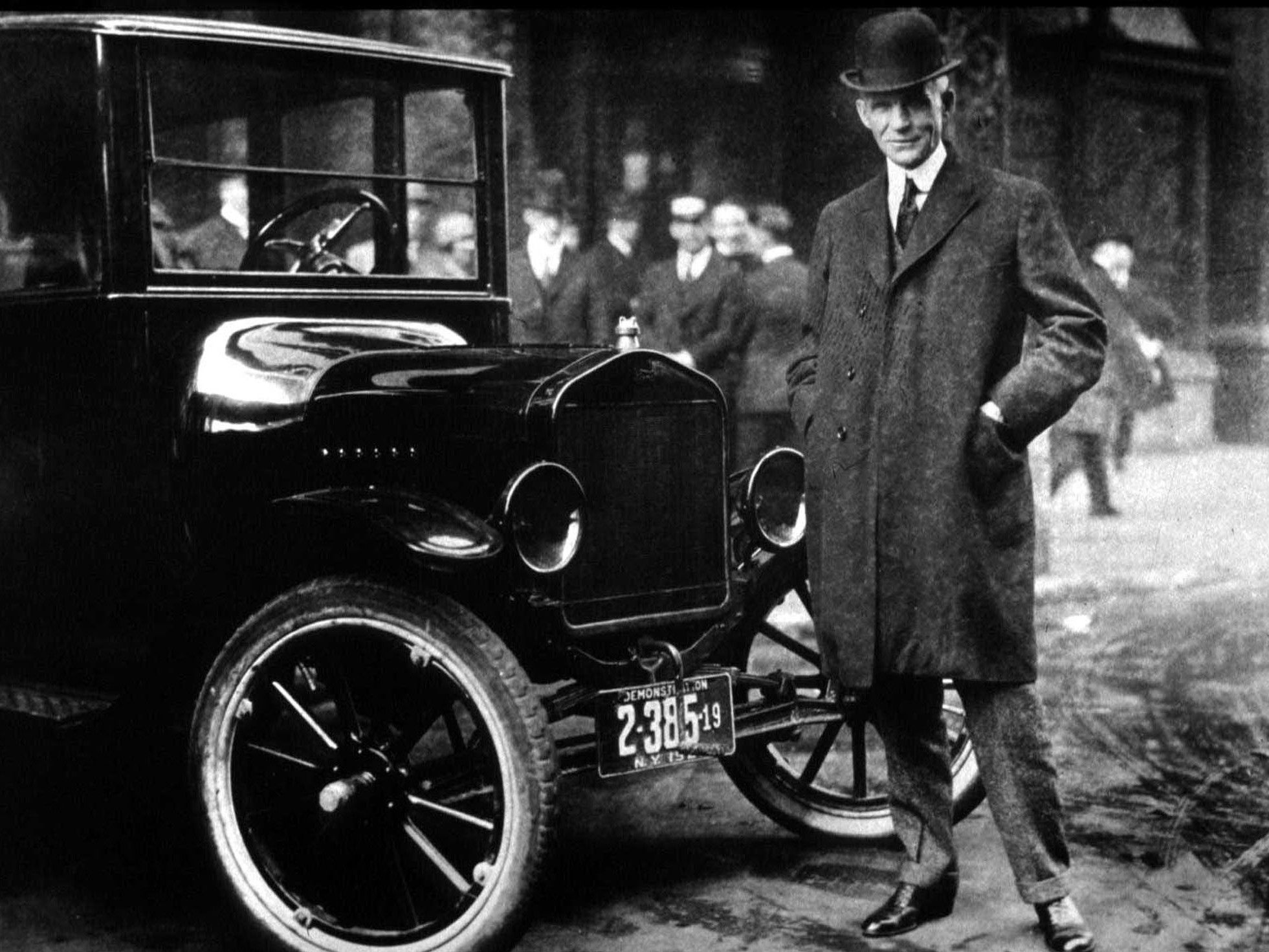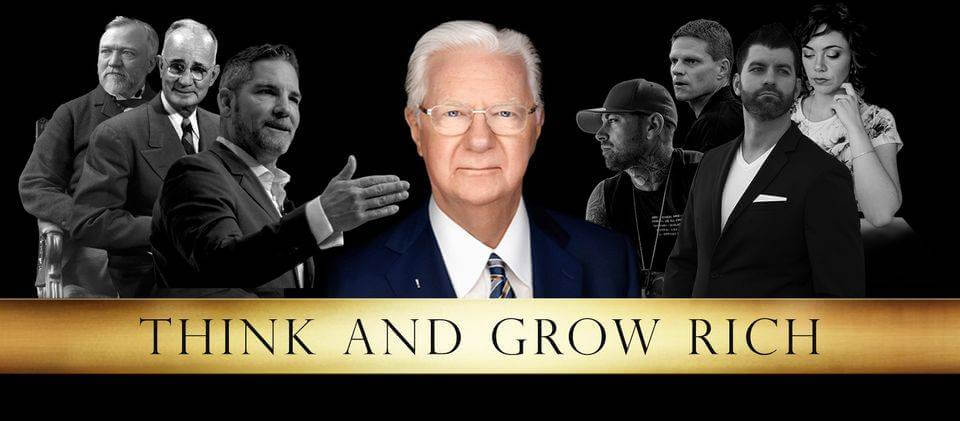NutmegsNook is excited to bring you this list of amazing products! We've hand-picked each item on the list, and we're confident you'll discover your new favorite product among them. NutmegsNook may collect a share of sales or other compensation from the links on this page if you decide to buy something, but all opinions in this article are our own. So go ahead and treat yourself to something new and enjoy something wonderful!
Tired of being a "lightbulb" moment away from genius? Get inspired by the inventor of the lightbulb, Thomas Edison, and learn about his life and inventions with our fun facts about the master of invention!
Thomas Edison is one of the most famous inventors of all time.
He was a prolific inventor, having created the light bulb, the phonograph, the motion picture camera, and many other inventions that have changed the world.
Edison was a true innovator, and his inventions have had a lasting impact on the world. He was an incredibly hard worker, and he believed that failure was just a stepping stone to success.
He said, “I have not failed. I've just found 10,000 ways that won't work.”
This article will explore the life and accomplishments of Thomas Edison.
We'll look at his inventions, his business ventures, and his philosophy on life. We'll also look at how his work has shaped the world we live in today.
This article will be an inspiring look at the life and accomplishments of one of the most influential inventors in history.
It'll be an exciting journey into the mind of a genius, and it'll give readers an insight into the life and work of Thomas Edison.
Get ready to be inspired and amazed by the life of this incredible man!
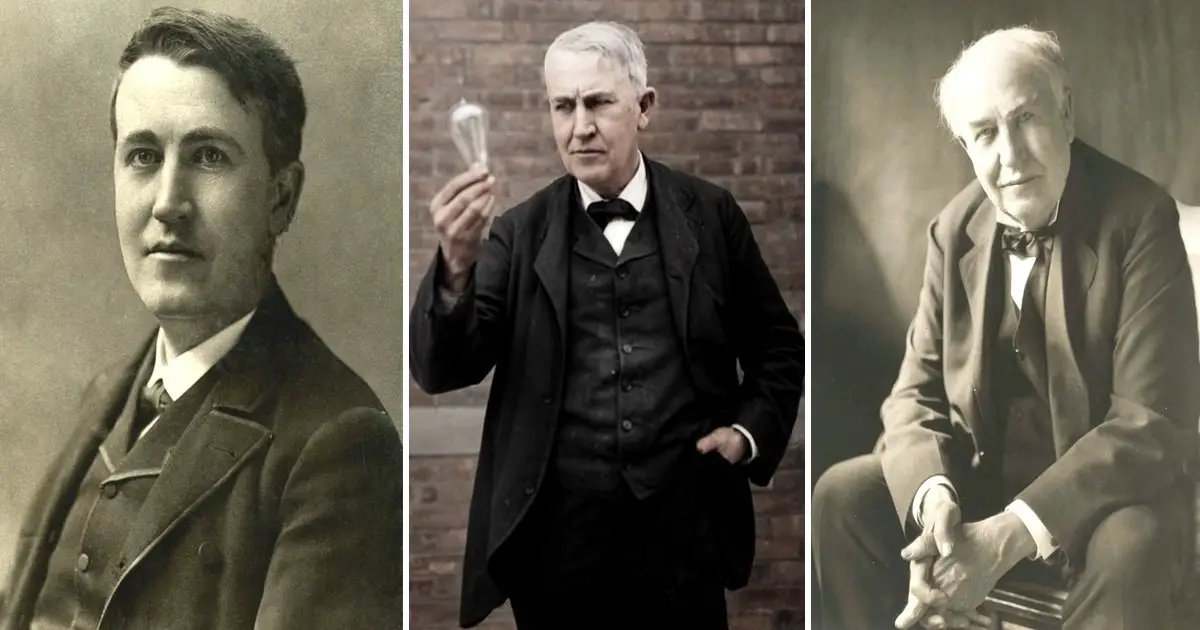
Why We Love Thomas Edison
When you think of innovation and invention, it's hard to ignore the contributions of Thomas Edison. He was a true pioneer in his field, with over 1,000 patents under his name.
From the phonograph to the light bulb, Edison changed the way we live our lives by introducing new technologies that made life more convenient and efficient.
His inventions have impacted generations of people around the world and continue to do so today.
If you're looking for inspiration or just want to learn more about this iconic inventor, our team has compiled an extensive list of resources on Thomas Edison.
We've done all the hard work so that you can easily find out more about this amazing man and his incredible accomplishments!
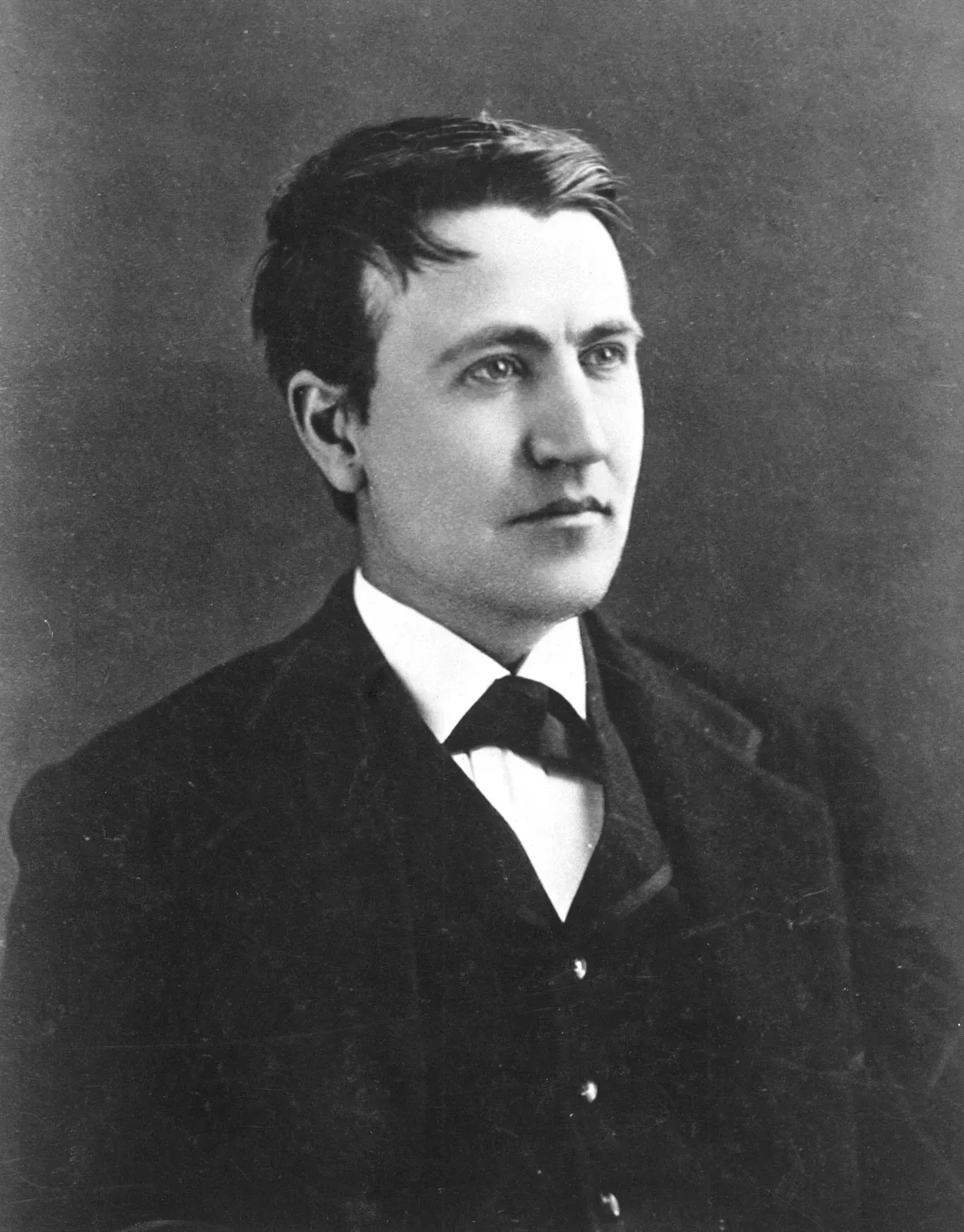
The Untold Story of Thomas Edison: The Man Who Lit Up the World
Thomas Edison is widely regarded as one of the greatest inventors of all time.
He was the mastermind behind some of the most significant innovations of his time.
However, the road to success was not a smooth one for Edison, as he faced numerous trials and tribulations in his journey to invent the lightbulb.
Here's the untold story of Thomas Edison and how he lit up the world.
Early Life and Career
Edison was born in Milan, Ohio, in 1847. As a child, he was always fascinated by the world of science and technology.
By the age of 12, Edison had already started experimenting with chemicals and electricity.
He was only 16 when he got his first job as a telegraph operator in Ontario, Canada.
After moving to the United States, Edison worked as a telegrapher for many years.
Edison performed well in his telegraph job in the beginning as the Morse code was written on paper, and Edison's partial deafness didn't affect his performance.
However, as telegraph technology progressed, sound receivers became more common, which allowed telegraphers to understand messages by listening to clicks.
This change made it challenging for Edison to find employment opportunities. Eventually, in 1868, he returned home.
This work provided him with a wealth of knowledge about electrical systems.
In 1876, he moved to Menlo Park, New Jersey, where he established a laboratory that would become the home of some of his most significant inventions.
The Invention of the Lightbulb
At the time, the world was in dire need of a light source that could replace the unreliable and dangerous gas lamps.
Many scientists and inventors had tried to create an electric light source, but no one had been successful.
Edison took up the challenge and began working on the idea of an incandescent lightbulb.
He first tried using platinum wires, but they burned out too quickly.
He then tried carbonized bamboo fibers, which were more resilient and long-lasting.
However, after months of experimentation, Edison was still no closer to a solution.
Edison moved his inventing operations to Menlo Park, New Jersey in 1876, where he constructed a self-sufficient industrial research facility that included machine shops and laboratories.
Also in 1876, Western Union urged him to create a communication device to rival Alexander Graham Bell's telephone.
During the year 1877, Edison developed a device named a carbon transmitter, an invention that enhanced the quality of sound in telephones by allowing voices to be transmitted louder and more clearly.
He also invented the phonograph in the same year, which recorded sound by making impressions on a sheet.
He had to come up with 3,000 different filament ideas before he found one that worked.
This momentous occasion took place in 1879 when Edison discovered a carbon filament that would light for 40 hours.
Edison established the Edison Electric Light Company with support from notable financiers such as J.P. Morgan and the Vanderbilt family to conduct research and development. His significant breakthrough came in October 1879 when he created a bulb with a platinum filament.
Later, he discovered that carbonized bamboo was a more practical and cost-effective option for the filament during the summer of 1880, and this finding led to the development of a long-lasting and affordable light bulb.
During the summer of 1880, this company started making lamps.
At first, it was called the Edison Lamp Works, but it became the Edison Electric Lamp Company in early 1881 and became a proper partnership among Edison, Charles Batchelor, Edward H. Johnson, and Francis R.
A West Orange, New jersey resident from 1886 until his death in 1931, established his final and most comprehensive laboratory and factory complex about one-half mile (0.8 km) north of here in 1887.
In 1889, AC current became the dominant force in the field, and then in 1892, the Edison General Electric Company merged with another company to form General Electric.
Trials and Tribulations
Edison's journey to create a lightbulb was not a smooth one. In fact, he encountered many challenges and setbacks along the way.
Edison himself said, "I haven't failed—I've just found 10,000 ways that won't work."
One of the biggest challenges he faced was finding a suitable filament for the bulb.
To make his filament last longer, Edison needed a vacuum pump to remove the air from the bulb. However, he faced another challenge in making a reliable vacuum pump.
Edison and his team experimented with various designs, including one that helped P.T. Barnum inflate a balloon.
Eventually, Edison was able to create a reliable vacuum pump that allowed him to create the first commercially-viable incandescent light bulb.
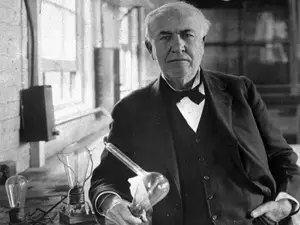
Thomas Alva Edison, Legacy and Impact
Edison's invention of the lightbulb had a profound impact on the world. It changed the way people lived, worked, and interacted with each other.
With a reliable and affordable source of light, people could work and read in the evening hours, greatly increasing productivity.
Over the years, Edison would go on to invent many other devices, such as the telegraph, phonograph, and motion picture camera.
All in all, Edison's life serves as a testament to the power of perseverance and dedication.
He faced countless setbacks and failures, but he never lost sight of his goal.
Edison's story shows us that even the most seemingly impossible challenges can be overcome with the right mindset, attitude, and approach.
So the next time you turn on a lightbulb, remember Thomas Edison and the countless hurdles he had to surmount to light up the world.
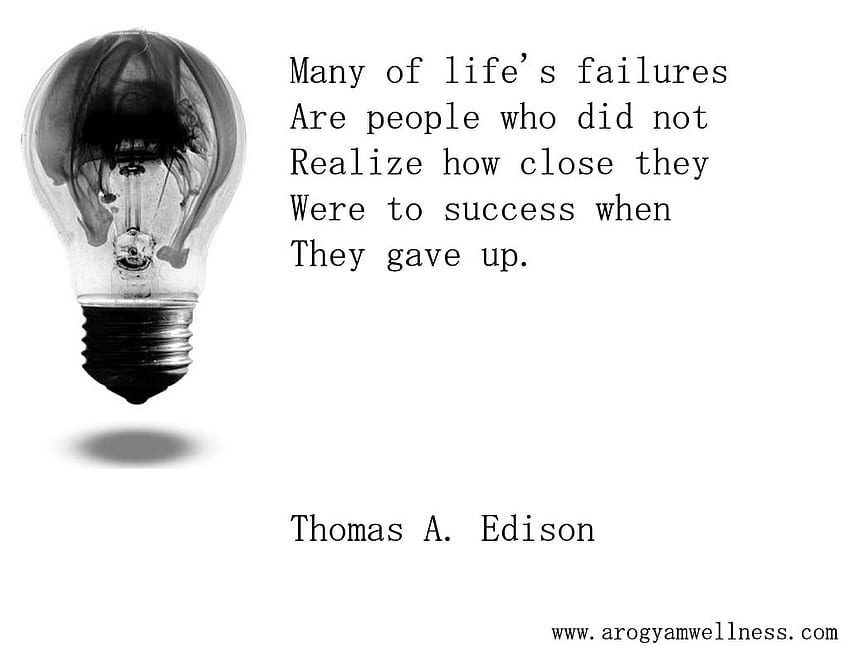
Edison's Work and FAQS
Thomas Edison is a legendary inventor, but what else do you really know about him?
We often hear about Thomas Edison's incredible inventions, but there's so much more to learn about this great inventor.
From his early days as a telegraph operator to his later successes as the founder of General Electric, Thomas Edison's life was full of remarkable achievements.
We've compiled a list of the most frequently asked questions about Thomas Edison so you can learn more about this amazing individual.
Top 10 FAQs About Thomas Edison, His Quotes, and Think and Grow Rich Mindset
Thomas Edison was one of the greatest inventors of all time, known for inventions such as the incandescent light bulb, the phonograph, and the motion picture camera.
His legacy can be felt to this day, through his quotes and his influence on the "Think and Grow Rich" mindset.
Let's explore the top 10 FAQs about Thomas Edison, his quotes, and the mindset he inspired.
1. Who was Thomas Alva Edison?
Thomas Edison was an American inventor and businessman who lived from 1847-1931.
Edison got married to Mary Stilwell in 1871. At that time, she worked at one of his businesses and was just 16 years old. Throughout their 13 years of marriage, they had three children named Marion, Thomas, and William.
Interestingly, William also became an inventor.It is believed that Mary passed away at the age of 29 in 1884 due to a possible brain tumor. Edison married Mina Miller, who was 19 years younger than him, in 1886.
He had a significant impact on the world of technology through his many inventions, including the phonograph and the incandescent light bulb.
He held over a thousand patents and was known for his determination and grit in the face of challenges.
The Thomas Edison Depot,was the second satellite facility of the Port Huron Museum, Museum, and was opened on February 11, 2001.
2. What is Thomas Edison’s most famous quote?
One of Thomas Edison's most famous quotes is "I have not failed. I've just found 10,000 ways that won't work."
This quote exemplifies Edison’s mindset about treating failure as part of the learning process, not something to be feared or ashamed of.
In fact, Edison saw failure as a necessary step in his journey to success, and he used it as an opportunity to learn and grow.
3. How did Thomas Edison inspire the "Think and Grow Rich" mindset?
The "Think and Grow Rich" mindset is based on the idea that success is achievable through the power of one’s thoughts.
Edison was a big proponent of this idea and believed that success could be achieved by embracing failure and working hard to overcome challenges.
He inspired others to adopt this mindset and to persevere through difficult times with a positive attitude and strong work ethic.
Hundreds of entrepreneurs like Andrew Carnegie, Thomas Edison,and Henry Ford were interviewed and studied by Napoleon Hill for his classic book, Think and Grow Rich.
4. What are some of Thomas Edison's best inventions?
The initial creation that he came up with was a device for recording votes using electricity, an electric vote recorder.
Some of Thomas Edison's best-known inventions include the phonograph, the motion picture camera, the incandescent light bulb and the Edison electric lamp.
These inventions revolutionized the way we listen to music, watch movies, and light our homes.
5. How has Thomas Edison influenced the world of technology?
Thomas Edison's inventions have had a profound impact on the world of technology.
To create an efficient incandescent lamp, Edison and his colleagues experimented with more than three thousand theories. Such lamps produce light by passing electricity through a filament, causing it to heat up and emit light.
Inventors attempted to create incandescent lamps that could produce less intense light than the existing arc lamps, which were too bright for small spaces like homes. Edison's lamp had a filament placed inside a glass vacuum bulb that he created in his own glass blowing shed.
His development of the incandescent light bulbs paved the way for the widespread use of electricity in homes and businesses.
He also made significant contributions to the fields of sound recording, telegraphy, and motion pictures.
6. What does Thomas Edison's quote "Genius is one percent inspiration and ninety-nine percent perspiration" mean?
Thomas Edison's quote "Genius is one percent inspiration and ninety-nine percent perspiration" is a reminder that success is achieved through hard work and perseverance.
Inspiration alone is not enough to achieve great things; it takes dedication and determination to see a project through to completion.
7. What can we learn from Thomas Edison's failures?
Thomas Edison experienced many failures throughout his career, but he never let them discourage him. Instead, he saw them as opportunities to learn and grow.
By embracing failure as part of the learning process, we can develop the resilience needed to persevere through difficult times and ultimately achieve our goals.
8. How can the "Think and Grow Rich" mindset help us achieve success?
The "Think and Grow Rich" mindset can help us achieve success by shifting our mindset from a fear of failure to a focus on growth and opportunity.
By thinking positively and embracing challenges as opportunities to learn and grow, we can develop the resilience and mindset needed to achieve our goals.
9. What is the importance of perseverance in achieving success?
Perseverance is key to achieving success because it allows us to overcome obstacles and keep pushing forward towards our goals.
Thomas Edison's career is a perfect example of the power of perseverance in the face of adversity.
Despite facing many setbacks and challenges, he never gave up on his goals and ultimately achieved great success.
10. How can we apply Thomas Edison's mindset to our daily lives?
We can apply Thomas Edison's mindset to our daily lives by adopting a positive attitude towards failure, focusing on growth and opportunity, and working hard to achieve our goals.
By embracing Edison's philosophy, we can develop the mindset and resilience needed to overcome challenges and achieve success in our personal and professional lives.
The Iconic Inventor
In conclusion, Thomas Edison's legacy lives on through his many inventions, his inspiring quotes, and the think and grow rich mindset that he helped inspire.
His philosophy of embracing failure and persevering through challenges is just as relevant today as it was in his time, and we can all benefit from adopting his mindset and philosophy in our own lives.
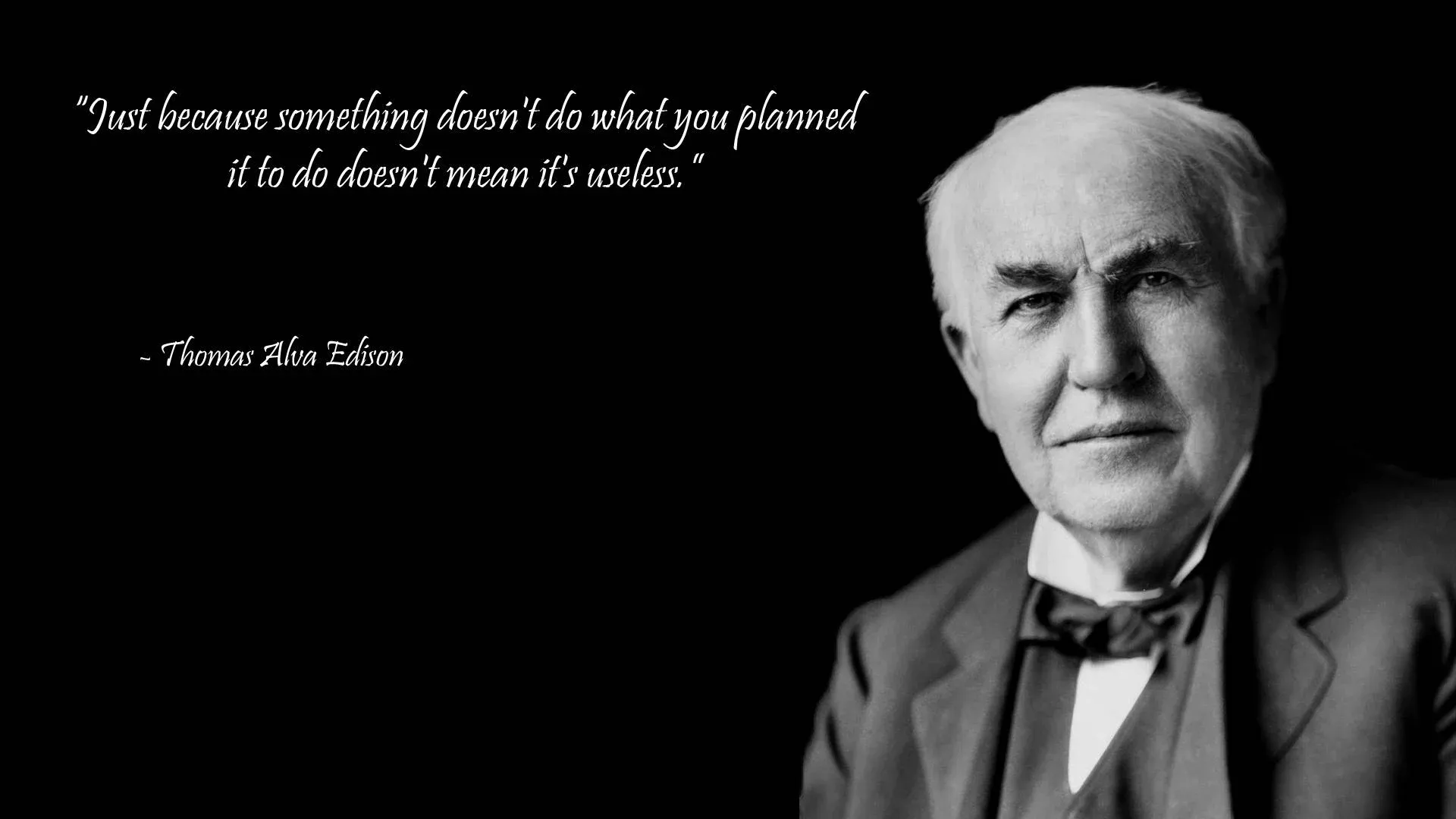
Thomas Edison
Thomas Edison was an incredible inventor who made significant contributions to the world of technology.
His inventions revolutionized the way people work, communicate, and even how they think.
Edison was a true innovator and his inventions, such as the lightbulb and the phonograph, have left a lasting legacy on the world.
Whether you're a student of history or a budding inventor, studying the life and works of Thomas Edison can provide valuable insights into the power of innovation.
So take some time to learn about this great inventor and all he accomplished, and use his inspiring example to fuel your own creativity and ambition.
Do you want to be the next millionaire?
Schedule a 30-minute Success Session below if you are interested in joining the best personal development mastermind ever!
We are excited to speak with you!

